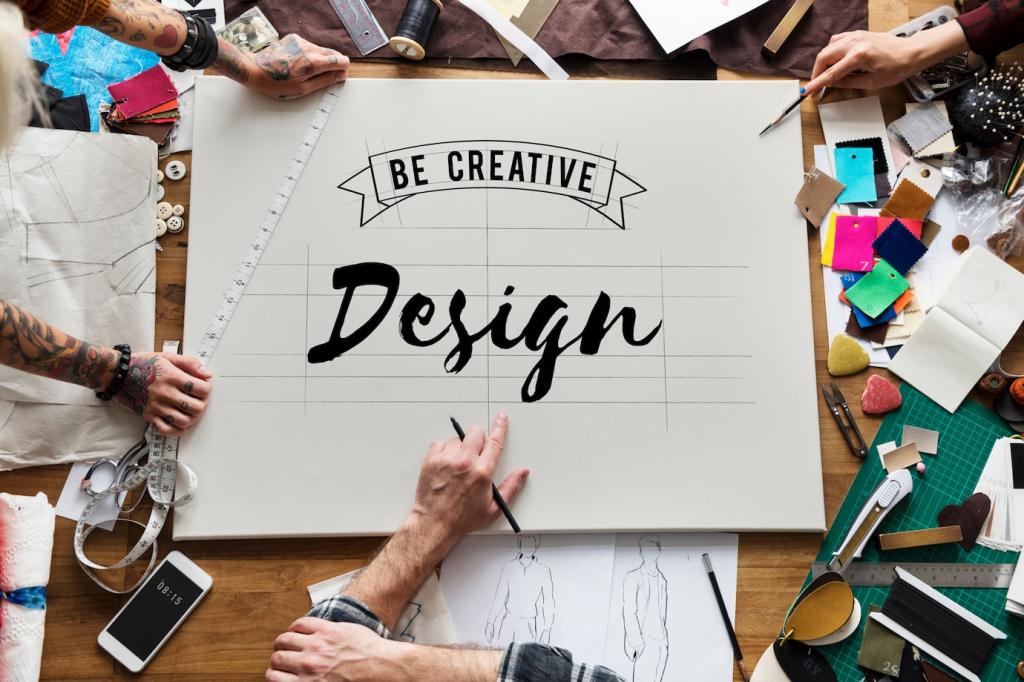Craft Your Signature: Developing a Unique Brand Voice in Interior Design
Chosen theme: Developing a Unique Brand Voice in Interior Design. Step into a creative space where your words feel as intentional as your floor plans, and your personality becomes the most memorable room your audience ever visits.
Define the Soul of Your Studio
Are you the Sage who educates, the Creator who experiments, or the Caregiver who comforts? Selecting an archetype helps stabilize tone, guide vocabulary, and shape stories that attract clients who genuinely resonate.
Define the Soul of Your Studio
Condense your philosophy into a single, sincere line. A boutique studio once shifted from vague elegance to “quiet spaces for loud lives,” and suddenly their messaging felt unmistakably their own.



Ask clients what they value, fear, and celebrate about home or hospitality spaces. Listen for recurring phrases, then mirror them thoughtfully in your brand voice without copying their exact words or diluting your perspective.

Create persona notes that evolve with each project. Include mood triggers, decision styles, and dream outcomes, so your writing anticipates objections and aspirations while still sounding confidently, unmistakably like you.

Identify pivotal points—initial inquiry, presentation day, post-install follow-up—and script the tone for each. Warm reassurance early, crisp clarity during decisions, and celebratory gratitude afterward keep your voice human and timely.
Translate Design Philosophy into Words

Build a Materials Lexicon
If you love limewash, linen, and unlacquered brass, say so. Name textures and finishes with specificity, then connect them to feelings—calm, patina, hush—so your copy conveys tactile depth, not just style labels.

Use Spatial Metaphors Thoughtfully
Describe strategy as circulation, clarity as daylight, and revisions as joinery. Metaphors rooted in practice illuminate your process, making complex decisions feel approachable and genuinely tied to your craft.

Color Your Tone Intentionally
If your palette favors neutrals, consider restrained, elegant phrasing. Maximalist sensibility? Let your syntax dance. Align cadence and word choice with your visual identity to create a seamless, memorable brand experience.
Pair concise project overviews with a signature perspective line. A studio once added “We design pauses in a busy world” beneath every case study, and inquiries began echoing that phrase back to them.

Align Voice with Visual Identity
Serif can whisper heritage; geometric sans can suggest clarity; handwriting can imply intimacy. Choose type families that embody your voice, then keep hierarchy consistent so reading feels effortless and on-brand.
Align Voice with Visual Identity
Accompany images with micro-stories—why the grout width matters, how a light line softened a corridor. Useful captions add authority and turn beautiful pictures into persuasive, voice-forward narratives.
Align Voice with Visual Identity
If your voice is calm, use gentle fades; if bold, use decisive transitions. Subtle motion reinforces tone, making your digital spaces feel as curated as your material boards and elevations.
Tell Stories That Sell Without Shouting
Case Studies with a Heartbeat
Structure stories as before, insight, intervention, and after. Include a client quote in their real words, then interpret it with your perspective so readers see both expertise and empathy working together.
Founder Origin, Not Origin Myth
Share one formative moment that shaped your taste—a cramped studio apartment, a mentor’s critique, a travel texture. Keep it grounded and reflective, inviting readers to connect and continue the conversation.
Editorial Rhythm That Builds Trust
Create a content calendar with rotating themes—Process, Principles, Places. Rhythm fosters expectation, and expectation breeds loyalty. Invite readers to subscribe for thoughtful insights rather than occasional announcements.
Measure, Evolve, and Protect Your Voice
Capture tone traits, do’s and don’ts, sample phrases, and formatting rules. Share it with your team and partners so assistants, copywriters, and PR support all speak in your cadence, not theirs.
Experiment with subject lines, lead paragraphs, and call-to-action phrasing. Track replies, saves, and time on page. Let data inform refinements while your underlying philosophy remains consistent and recognizable.
When comments misread your tone, respond with clarity and kindness. A steady, respectful reply in your established voice turns tension into trust and demonstrates the maturity behind your practice.
